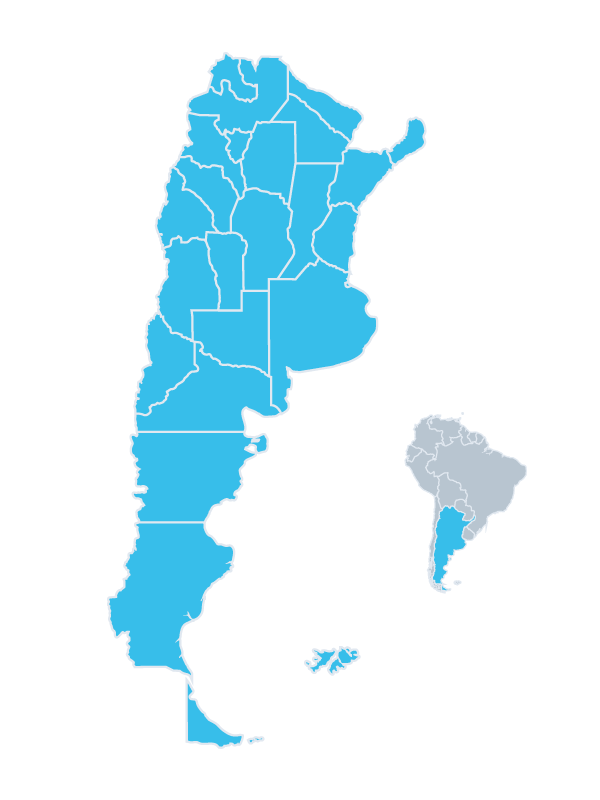Northwest: Between the Highlands and Valleys
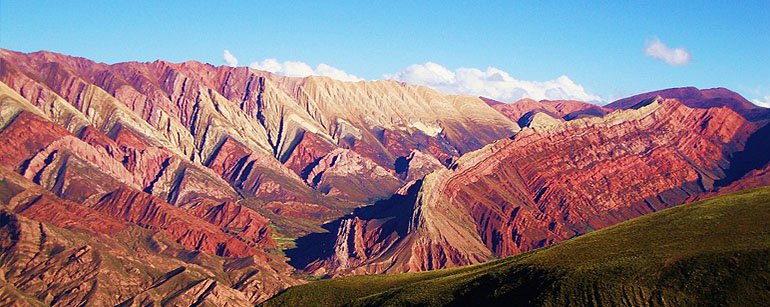
The Northwest provinces exhibit mixed pre-Columbus vestiges, ruins of fortresses and Indian villages, as well as constructions from the age of the conquest and colonization. It is a region full of contrasts, where the visitor goes deep in the historical roots of the Latin-American civilization and culture. Its geography is made of the Calchaquies Valleys, the “Altiplano de la Puna” (High Plains of the Puna*) and the “Quebrada of Humahuaca”#, which has been declared as Patrimony of Humanity. This variety of landscapes amazes everyone the same way. Surrounded by hills, some of them multicolored with their slopes covered with a great quantity of imposing cactus. It is just in these lands where the population still keeps the practices and customs of its ancestors, staying among other popular events, which contribute with the veneration of the Mother Earth and the celebration of the carnival.
Salta, Tucuman and Jujuy are the most attractive provinces to be visited.
Salta is usually called “the beautiful one”, as it makes you fall in love at first sight with its eclectic Calchaquí Valleys and its immense Puna. Salta city, capital city of the homonym province, still keeps its colonial aspect, with profusion of constructions from the eighteenth and nineteenth centuries. The province proudly offers the most amazing tours that allow crossing the Andes Mountain Range and getting into the heart of the Altiplanic lands though the so called “Quebradas”. Tours goes through the peculiar geography sculpt by the winds and sun, the amazing rocky formation of ravines and multicolored hills. Here fine cuisine and wine - another treasure of Salta - are always present. Cafayate is where the famous “torrontés wine” is manufactured – it is a white and fruit wine, very typical of the Salta Province.
This region is suggested to be visited from autumn to the end of spring. Winter is cold-dry and summer is very hot but with the advantage of being very dry. We recommend autumn, winter and spring as ideal seasons.
What can we do there?
-
Visit to the city of Salta and its surroundings
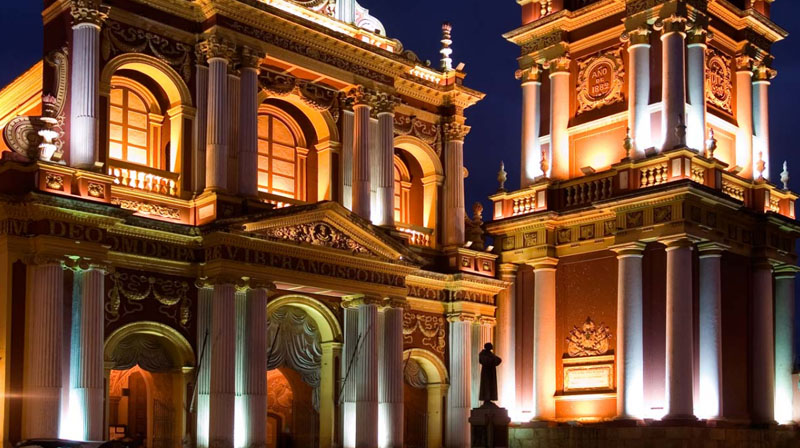
Covered distance: 62.5 miles approx.
Duration: 3 hoursday tour in this beautiful capital city of the province, which still keeps its colonial aspect, with profusion of constructions from the eighteenth and nineteenth centuries. We’ll start the tour from the Main Square (9 de Julio Square) to visit its most beautiful buildings, such as the Cathedral Church, the historical council, San Francisco Church and the San Bernardo Convent. Following the route, we will climb up to the peak of the San Bernardo Hill which with its panoramic view dominates the city and the whole huge Valley of Lerma. Leaving this peak, one can reach the summer villa of San Lorenzo, with enough time to drink a comforting tea and visit the Craft Market, which is at last of the excursion but it is still an interesting part of the tour.
-
Visit to Cafayate and the Calchaquíes valleys
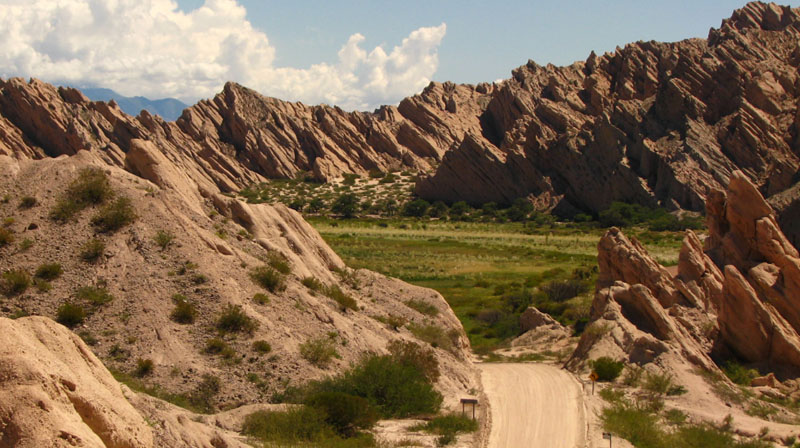
Covered distance: 243.75 miles approx.
Duration: 10 to 12 hoursIt is a whole day tour along this peculiar geography sculpt by the winds and sun: we will appreciate the amazing rocky formation of ravines and multicolored hills, that protect villages by means of adobe brick and straw constructions. Along the road to Cafayate, we will find small agricultural-livestock villages such as Cerrillos, La Merced and El Carril, where these activities are developed. Further on, we will cross Quebrada de las Conchas in a route of 52 miles, which is the prelude to the Calchaquíes Valleys. Here, the wind erosion has captured a succession of natural caprices like the famous Garganta del Diablo (a closed and profound canyon); then at the view of the visitor appears the Amphitheatre (amazing mountain formation with a surprising acoustic), the Frog, the Fray, and the Nun Procession, the Obelisk and the Castles, whose names express the images that they name. The dryness of the landscape changes when reaching Cafayate, where great areas of vineyards can be observed. The region is worldly well-known since apart from its natural beauties, here the famous “torrontés wine” is manufactured – it is a white and fruit wine, very typical of the Salta Province. We will visit its colonial houses and the Church of the nineteenth century, as well as one of its wine cellars, where we will also have the opportunity of tasting some of its famous wines.
-
Quebrada de Humahuaca
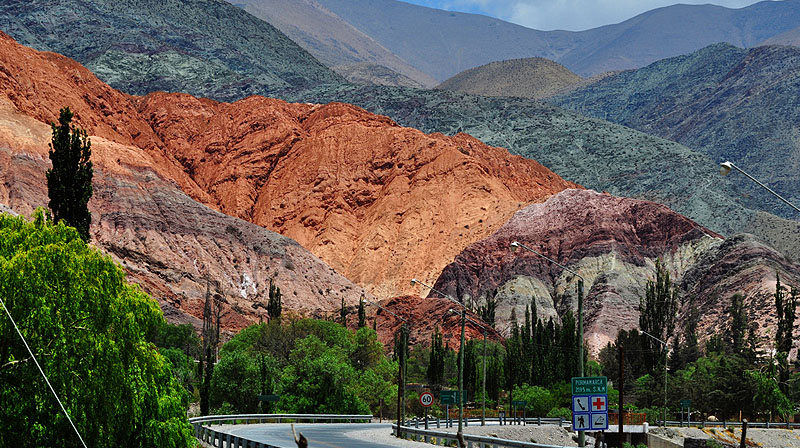
Covered distance: 312 miles approx
Duration: 10 to 12 hoursIt starts early in the morning to enjoy the Quebrada de Humahuaca (Humanity Patrimony since 2003). Multiple picturesque and colorful landscapes frame a group of towns, with adobe brick houses, historical chapels and prehispanic ruins where time seems to be stopped. The Quebrada (Ravine), densely inhabited during prehispanic times, is characterized by numerous towns with fortresses at the peak of the morros* and in the valley. After crossing the little towns of Yala, Volcán and Tumbaya, we arrive at our first stop: Purmamarca. Here we visit the Seven Colors Hill, its town and craft markets. We follow the road to Tilcara, village with fortress, built by the omaguacas Indians during the pre-Columbus times. We will visit the Pucará Ruins and the museum. Following the route, we reach Humahuaca, the most important town of the ravine, where the monument to the Independence, the adobe brick tower of the old church and the craft markets can be appreciated.
Going back to Salta and on the same route, we will make a short visit to the Uquia church, a small adobe brick chapel from the seventeenth century, which beautiful main altar from the Baroque style, sculpt in wood by hand and the famous painting from the Cuzco area “ The Arcabuceros angels” can be appreciated. Return trip to Salta.
* Morro refers to small cliffs.
-
Ruins of Quilmes (Optional Tour from Cafayate)
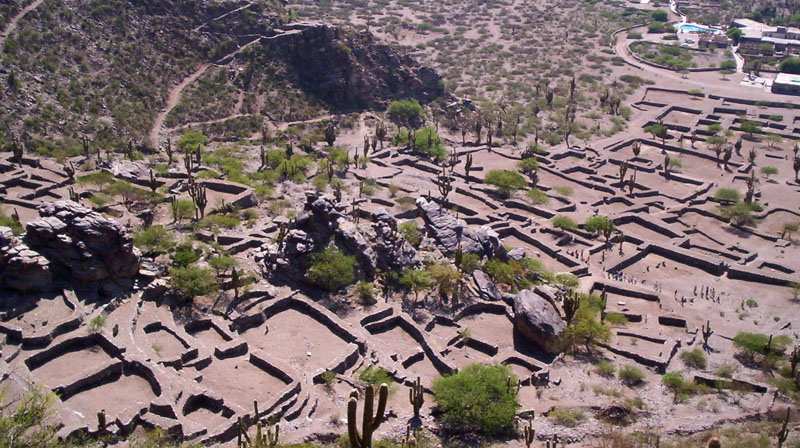
Covered distance: 306 miles
Duration: 12 hourselling 37.5 miles to the south of Cafayate, this Indian city built on the Alto del Rey Hill can be found. We will be able to visit this magnificent architectural work of art, which is undoubtedly one of the biggest pre-hispanic settlements of the northern area in Argentina. Home place of the Quilmes Indians, brave tribe that defended their territory during more than a century, fighting against the Spanish conquerors, who finally succeeded in conquering them in 1665. In that year they were deported to the banks of the La Plata River up to the current city of Quilmes, the place they arrived at after covering 937 miles on foot. The trip, as well as the change of climate, nurturing and customs contributed to the extermination of the last native Indians in 1812. We recommend this visit and to spend the night at the lodging house located at the foot of the citadel.
-
Cachi, Cuesta del Obispo and the National Park “Los Cardones”
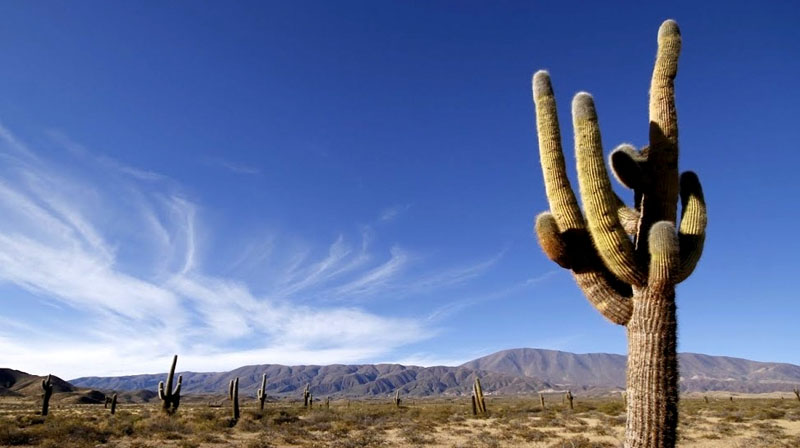
Covered distance: 212 miles approx.
Duration: 10 to 12 hoursLeaving Salta city and climbing along the Quebrada del Escoipe, one must continue the climbing through the endless bends of the wonderful Cuesta del Obispo. The route crosses the National Park Los Cardones, which apart from having these particular giant and prickly cactuses, houses vicuñas and the Andean deer or Northern huemul. We will later reach the picturesque and old town of Cachi, located at the fertile valleys of the Calchaquí River, at the foot of the snow-capped mountain with same name (which is more than 6000 meters high). Cachi keeps a rich historical legacy; there are still old houses and its interesting church, historical monument of the eighteenth century, as well as its famous Archaeological Museum, one of the most complete ones of the Northeast region of Argentina.
-
Safari to the Clouds
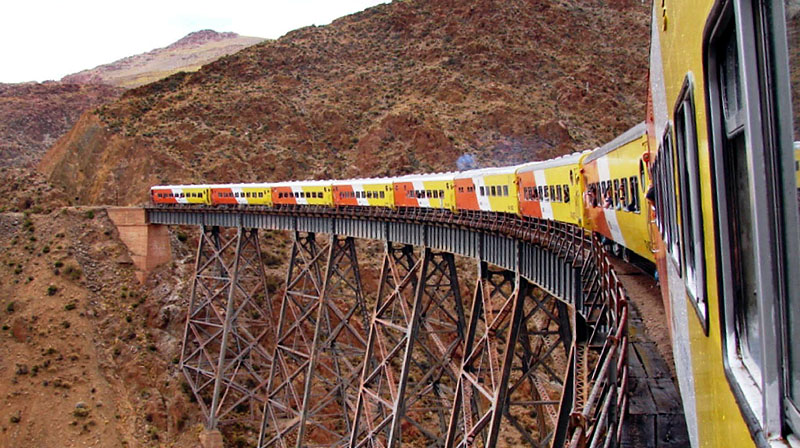
Covered distance: 318 miles
Duration: 15 hourss an exciting way to be covered with a vehicle that because of its technical features offers the only possibility of combining three routes that you cannot miss in the Argentinean northeast within one day, making this tour a spectacular journey: first, we will cover the “Road to the clouds”, following the railway tracks of the famous train to the clouds through the Quebrada del Toro until San Antonio de los Cobres. Secondly, we cross the Puna* through the national road number 40, reaching las Salinas Grandes de Jujuy - the Great Salt marshes of Jujuy- (a salt flat is a white and rough plain made of very clean salt). Lastly, we go down the Cuesta de Lipán reaching Purmamarca, picturesque town at the foot of the Hill of the seven colors. After visiting its square and little streets paved with cobblestones we go back to Salta.
* Puna refers to elevated plateau regions in the Andes, with cold desert climate.


